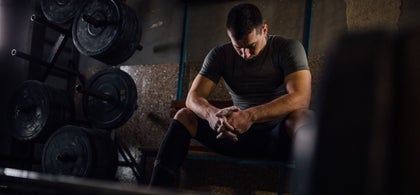4 Ways to increase energy expenditure
by Andy Bolton on Monday 10 January 2022
6 min read
When it comes to fat loss, the first thing people turn to is running and HIIT workouts, with the mentality that the more cardio they squeeze into their week the faster they’ll lose weight.
You may be pleasantly surprised to learn there’s a much easier, more effective alternative. It’s called NEAT, which stands for Non-Exercise Attenuated Thermogenesis. Essentially, the burning of fuels through incidental daily activity.
Before we go into that, we need to recap the energy balance equation, because to fully understand NEAT, we need to be able to put it into context.
When we’re in energy balance, our energy consumed through food and drink is matched with energy expended through physical activity and exercise. In order to lose fat, we need to be in an energy deficit. This means energy expended is greater than energy consumed.
"If I eat in a deficit, can I skip the exercise part?"
Unfortunately, it’s not that simple. Our bodies don’t like change. When we restrict our calories, our body will do everything possible to maintain energy balance. This is called adaptive thermogenesis and is the reason you feel sluggish and tired when dieting. This is your body in energy saving mode.
It’s integral to your fat loss journey that you don’t give in to adaptive thermogenesis and stay as active as you possibly can.
"So, where does NEAT fit into the equation?"
There is a difference between planned exercise and physical activity.
Planned exercise includes your runs, weights and HIIT workouts. On average we’d only burn around 150-250 calories per workout. Even if you trained 7 times a week (not advisable), you could easily reverse the energy you have expended through exercise by a big weekend of eating out and drinking.
Physical activity on the other hand refers to incidental activity accumulated throughout the day. This includes things like walking between places, climbing stairs, standing, picking up and putting down your kids, or carrying your shopping bags on a Sunday.
"But isn’t cardio meant to be really good for fat loss?"
When exercise intensity exceeds 75% of our max heart rate, our bodies prefer to use our carbohydrate stores for fuel. This includes resistance workouts, during the short bursts of work during sets. This process is called glycolysis, where carbohydrates are burnt for energy.
When exercise intensity is below 65% of our max heart rate, we tend to burn more fats. This is called lipolysis. This means our incidental daily activity or NEAT, when prioritised, will be a lot more effective when it comes to fat loss.
We also refer to this work zone as Low Intensity Steady State (LISS). It’s why you see bodybuilders walking on the treadmill for 30 mins after a weights session, because they want to burn fat and understand they need to keep their heart rate under 65% to do so.
But there are more effective ways of increasing your NEAT or LISS without having to spend hours per week on the treadmill.
"So, what are some strategies I can use to increase my NEAT?"
We should always be looking for opportunities to keep active. Try parking further away from work than you normally would so you can get a 5- or 10-minute walk in and choose the stairs over the elevator.
Organising social events around physical activity on weekends rather than food and drinks will benefit your fat loss journey. Rather than sitting in a cafe for brunch, try getting takeaway coffees and going for a coastal or bush walk.
Set yourself a goal of 10,000 steps a day. You can track your steps through your phone, My Fitness Pal app or download free pedometers on Google Play or via the app store. This doesn’t need to be achieved in one hit. Instead break this goal up into mini targets.
Try and avoid extended periods of sitting. One strategy you can use is setting a timer to ensure you’re not sitting down for periods of longer than 20-30 minutes. Break it up with little walks around the office or house. You may find it increases your productivity as well.
These minor changes to how you spend your time, actively (but not constantly pushing pass your limits), will not only make a difference to your fitness but also your mental wellbeing.
Ready to get started on your fitness journey? Stop by Reception the next time you're in, and we'll get you sorted. Or you can reach out to us today.
Related articles
Connect
5 min read
Why High-Performing Professionals Work with Personal Trainers
Connect
5 min read
5 Reasons Why It’s Hard to Sustain New Year Resolutions (and How You Can Overcome Them)
Connect
5 min read
Finding Motivation in the New Year
Enjoying our blog?
Sign up to our newsletter to get updates on training, healthy living, news and events.




